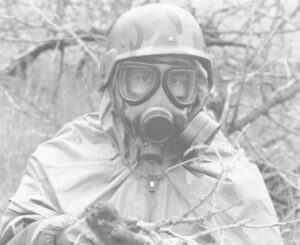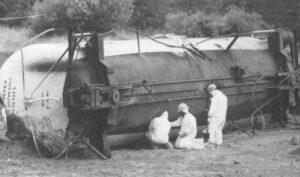From the air over the whitecaps of the central Pacific, Johnston Atoll looks like an aircraft carrier scuttled in a green lagoon.
Two miles long and a half-mile wide, the concrete-and-coral island stands about six feet above sea level. Its dominant feature, an airfield, takes up nearly the entire length. Thirty years ago, this sparse and isolated speck provided the launching pad for America’s last atmospheric nuclear weapons tests. One high-altitude explosion lit up the night sky in Honolulu, 825 miles to the northeast.
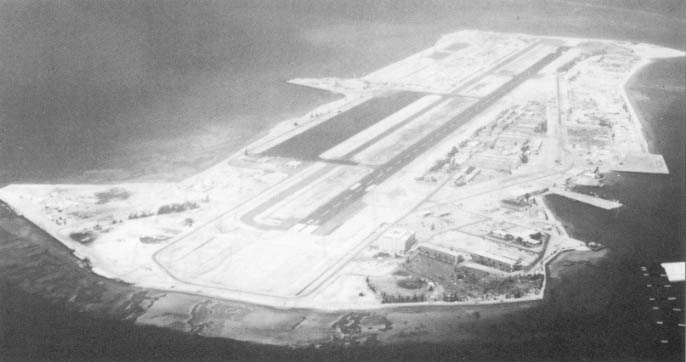
Less spectacular than nuclear pyrotechnics, Johnston’s modern-day duty is equally fearsome. The first cities are rows of storage igloos and wisps of vapor rising from an industrial complex on the southeastern shoreline. This labyrinthine Structure is the world’s first successful, large scale facility for the destruction of chemical weapons. On its menu are munitions filled with compounds that short-circuit muscles or scar eyes, skin and lungs. The symbol for the installation, as shown on souvenir ball caps, is a fire-breathing dragon, suggesting both the menace of the chemicals and the furnace built to eliminate them.
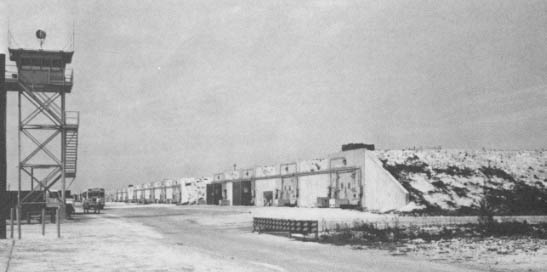
In 1988, when the plant was in the works, Vice President George Bush said, “If I’m elected president, if I’m remembered for anything, it would be this: a complete and total ban on chemical weapons. Their destruction forever.” But, as the last four years have demonstrated, ridding the world of chemical weapons is no easy chore. The United States owns more than 25,000 metric tons of war chemicals, housed in rockets, artillery and mortar rounds, mines, bombs and bulk containers. Largely obsolete, this Cold-War ordnance is slowly deteriorating at Johnston and eight Army depots in the continental United States. The former Soviet Union has about a 40,000-ton arsenal, all of it in Russia. The Russian government has shown little interest in taking up the disposal issue.
SPENDING 60 TIMES THEIR COST TO GET RID OF THEM
The U.S. disposal effort, while at least underway, is way over budget and behind schedule. congress ordered that 90 percent of the older stocks be destroyed by April 30, 1997. The Army. Which is handling the destruction of chemical weapons lot- the federal government, now says it can’t get the job done before the end of the year 2000. Meanwhile, the cost of tile program more than quadrupled since 1985, from $1.7 billion to $7.9 billion. That’s 60 times the initial price of the weapons.
The program also is under siege from environmentalists who say caution: incinerator smoke may be hazardous, to your health. “While the demilitarization and eventual disposal of these weapons is necessary, incineration will release dangerous quantities of extremely toxic substances, including dioxins and furans. into the environment,” says Lenny Siegel of the Boston-based National Toxics Campaign Fund. “These substances, cause cancer, liver disease, immune system disorders, birth defects and a number of other serious health problems.” Scientists now say dioxin, an ingredient in the Vietnam era defoliant Agent Orange, may not be as dangerous ;is once believed. Still, the NTCF and Greenpeace have called for more research into alternatives to burning. The National Research Council is taking an independent look at other, emerging technologies.
As part of a tune-up and test run that began in 1990, the Johnston Atoll Chemical Agent Disposal System has destroyed 7,565 rockets containing GB nerve agent and 13,889 containing a thicker liquid, nerve agent VX. However, the plant, the model for eight more on the U.S. mainland, has suffered perturbing, if not dangerous, breakdowns and technical glitches. The furnace was shut down temporarily in January after an explosion put an eight-inch hole in the rotary kiln. There were no injuries or leaks of nerve gas. Another incident, in December 1990, resulted in the release to the atmosphere, of a minute amount of GB. In fact, it was less than one-fourth the concentration of GB that the law allows in stack emissions, benignly equivalent to a couple of blasts of household roach spray. But that kind of thing wasn’t supposed to happen.
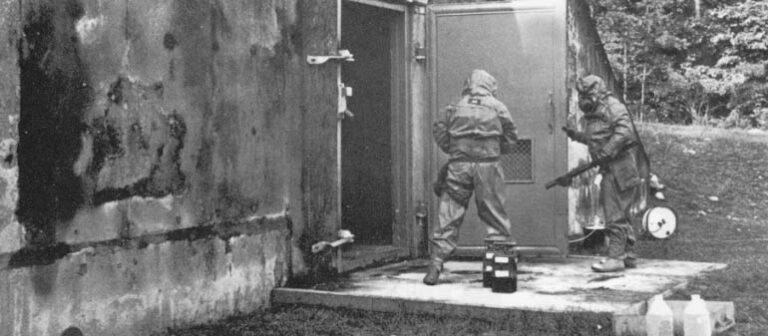
In the Army’s stated view, the fate of the chemical stockpile is a matter of increasing urgency. On Nov. 14, a leaking container of VX was discovered at the Newport Army Ammunition Plant in Indiana. The faulty valve area then was sealed, and the Army said there was never any danger. Yet subtle leaks of this nature have happened before at every chemical depot and are a source of constant concern. hundreds of chemical-tipped explosive munitions have had to be “overpacked” in special air-tight containers.
Particularly worrisome is the obsolete M-55 rocket, first in line for disposal. Now numbering roughly 400,000, the M-55 is 78 inches long and contains either GB or VX. Unlike a mortar round or artillery shell, an M-55 can’t be safely dismantled. What’s more disturbing, left to its own devices, the rocket propellant will self-ignite. It contains a stabilizing chemical, a preservative of sorts, but after many years the preservative deteriorates. Under an unlikely, worst-case scenario, a rocket would ignite, explode, set off neighboring rockets, rupturing the bunker and lofting a cloud of deadly gas toward, say, Richmond, Kentucky, population 50,000.
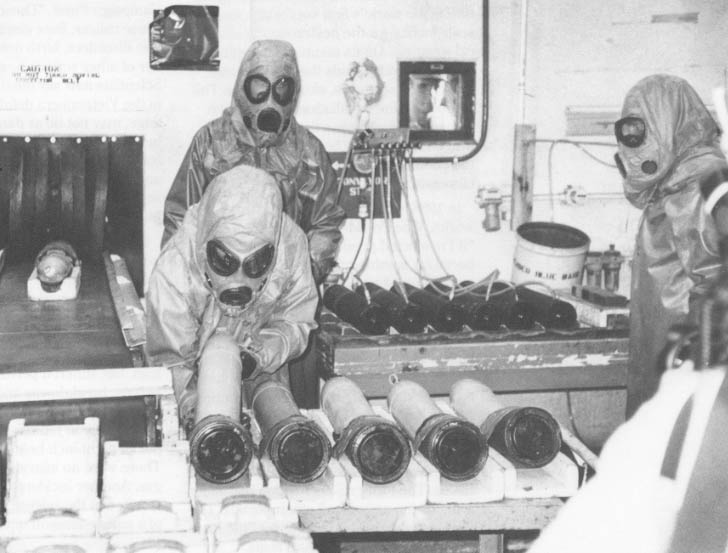
How did we get into this mess?
In the 50 years following World War I, when chemical weapons first were used in concerted battle, the standard disposal methods were open-pit burning, land burial and ocean dumping. In the United States, chemical weapons, policy took a dramatic turn in 1969. On July 8 in Okinawa, 23 U.S. soldiers and an Army civilian were exposed to GB nerve agent while doing maintenance at a chemical weapons storage site. They were hospitalized briefly for “minor symptoms” and recovered. But the Japanese government, which was negotiating for the return of Okinawa from U.S. control, was incensed to learn of the theretofore secret stockpile. There was speculation that some kind of leak was behind the mysterious illness of schoolchildren at a nearby beach the Summer before- Within Iwo weeks, the U.S. government promised to remove the weapons.
OPERATION CHASE: CUT HOLES AND SINK’EM
The destination was to have been the Umatilla Depot in Oregon, but Congress stepped in and outlawed shipments to the continental United States. The Army’s options narrowed further when a public outcry applied the brakes to Operation CHASE (Cut Holes and Sink’Em), specifically a plan to scuttle another 27,000 tons of obsolete chemical agents and ordnance in the Atlantic. With sea dumps unsanctioned, the arsenal on Okinawa was moved in 1971 to Johnston Island.
The Okinawa incident foreshadowed President Nixon’s order, in November 1969, to unilaterally halt chemical weapons production. What’s left is known these (lays is the “unitary” stockpile, Since the munitions contain a single chemical. By contrast, “binary” chemical weapons, put into production in 1987 but halted under a 1990 U.S.-Soviet agreement, carry two relatively less toxic agents that combine to reach full potency on the way to the target. For safety, each component is stored in separate canisters – in different states. If the Army ever wants to get rid of them, the ingredients, useful to industry can simply be sold.
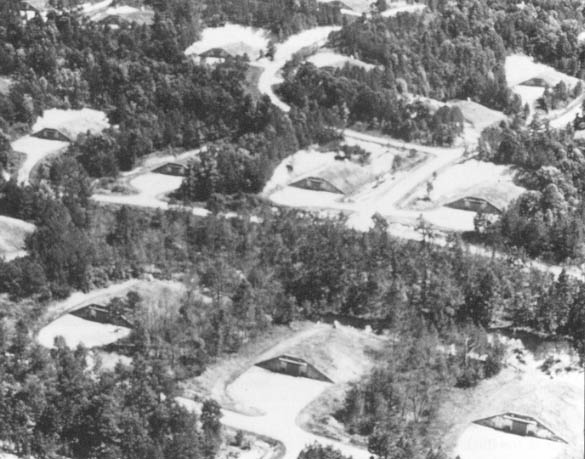
After years of tests, studies and advice from the National Research Council, the Army decided in 1982 to incinerate the unitary chemical stockpile. Under a later decision, this was to be done at each of the nine storage sites, rather than at one national or two regional centers. That avoided the hazards of interstate transport ion of the munitions by truck or rail.
The disposal method Selected, and the one in use on Johnston, is a multi-stage process that begins in a blast-resistant cell. Holes are punched in the munitions and the liquid chemical agent is drained off. The metal casings are chopped up. The chemical agent, metal parts, explosives and propellant, and “dunnage” – packing or contaminated materials – then are sent to separate high-temperature furnaces. The resulting ash and fumes are treated by scrubbers and other modern pollution-abatement devices. Waste salts laced with trace heavy metals are shipped out for burial at a landfill approved by the Environmental Protection Agency.
The system of air locks, filters and automated, continuous air-quality monitors is, according to the Army, safe, and environmentally sound.
But the GB rocket test phase took 32 weeks – twice the anticipated time – and fell well short of its goals. At the end of 16 weeks, the plant had destroyed 3,670 rockets, as opposed to the expected 9,984. In the handling. storage and shipping of hazardous material”, generated by the plant, and in keeping related data, the plant repeatedly violated federal law, specifically its permit under the Resource Conservation and Recovery Act (RCRA), an Army consultant found. These lapses resulted in no apparent environmental damage, said the report by the MITRE Corporation.
The slow disposal rate resulted in part from the failure of bolts holding together the furnace for the rocket pieces, MITRE, said. But there were other migraines. Molten aluminum and fiberglass from the rockets’ shipping/firing tubes periodically clogged conveyer belt. The kiln’s feed and discharge chutes jammed. On the days it was in operation, the plant ran regularly at one-third the intended rate. It was Completely shut down. due to repairs or refits, of 120 of 227 days, not including Sundays off.
Meanwhile, because of reliability problems and potential RCRA violations. the dunnage incinerator didn’t go on line until two months, after the GB rocket test run ended. The facility for drying waste brine was shut down early on because of pollution, and so liquid brine, rather than dried salts, had to be shipped to the U.S. mainland for disposal. Additionally, 133 substandard welds in the pipework had to be replaced.
“THE BASIC TECHNOLOGY IS SAFE”
From the standpoint of industrial safety, however, the plant fared well: only four injuries, none permanent, none related to munitions processing. Concluded that the basic technology “is safe, can be operated within environmental limits, and is capable of operation for at least short periods at close to the projected rate.” And despite the explosion in January, tile VX rocket destruction trials went quite rapidly.
But will it play in suburbia?
Critics say a better system must be found, particularly for disposal operations in the continental United States, where sonic chemical depots are very near towns schools and highways. A catastrophic accident at the Maryland or Kentucky site, while extremely unlikely, is by definition one that causes more than 1,000 deaths.

One approach abandoned by the Army a decade ago – detoxification of the chemical agents by mixing them with other chemicals – has won new support. “In my opinion. toxic chemical agents can be successfully ‘neutralized’ through reaction with other chemicals,” says retired Army Col. Jim Knipp, a former chemical corps officer now teaching math and physics at Bethel College in Tennessee. “The Army has chosen to incinerate chemicals not because the process is less hazardous, but rather because incineration is less costly.” The Army neutralized 8.4 million Pounds of GB in reactions with caustic sodium hydroxide at Rocky Mountain Arsenal in Denver and Tooele, Utah, in the 1970s and early ‘80s. But it was discontinued, the Army says, because the process was complicated, time-consuming and expensive; it created a bigger batch of non-lethal but nevertheless toxic waste: and small amounts of GB just wouldn’t go away.
Greenpeace and the National Toxics Campaign Fund say neutralization should be re-explored with other chemicals and modern industrial catalysts.
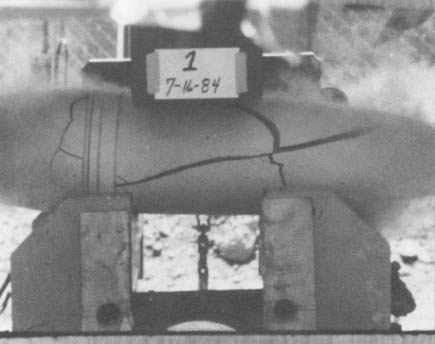
An inch-thick report issued in 1991 by Greenpeace International examined several other alternatives at various stages of research and development. Among them:
- Pressure cookers. At 700 degrees Fahrenheit under 218 times atmospheric pressure, water enters a strange state – too thin to be called a liquid, too thick to be a gas, but of such energy and density that it breaks down compounds with remarkable speed. So-called “supercritical” water oxidizes complex organic chemicals into clean water, gaseous carbon dioxide, oxygen and nitrogen, inorganic salts, acids or oxides, and – depending on the original compound – non-toxic organic molecules of sulfur, phosphorous, chlorine or fluorine. Experiment – based on patents held by Michael Modell, formerly of MIT, have destroyed dozens, of industrial agents. A large pilot plant is operating at the University of Texas, Austin, in cooperation with Eco Waste Technologies. In January 1991, a five year, $9.3-million experimental study was announced by the Defense Advanced Research Projects Agency.
- Enzymes on the half shell. Recent research by Wayne Landis of Western Washington University and colleagues shows that an enzyme from a brackish water clam degrades nerve agents and pesticides. This class of enzymes, known as organophosphate acid anhydrase, has also been found in E. coli bacteria (common in human intestines) and squid. Landis until 1989 was leader of the Army’s Environmental Toxicology Group at Aberdeen Proving Ground
- Caustic Jacuzzis. Pesticides, similar to nerve agents, and explosives have been successfully detoxified in molten salt baths. Sodium carbonate, for example, maintained at 1,500 to 1.800 degrees Fahrenheit, is inexpensive, stable, nonvolatile, non-toxic and can be recycled. Research is underway at Rockwell International, Lawrence Livermore National Laboratory and the Sandia National Laboratories.
An alternative that is getting some Army research money – thanks to support in Congress – is cryofracture, a process that freezes and crushes munitions before incineration. Once dipped in liquid nitrogen at about minus 320 degrees Fahrenheit, metal becomes brittle, making it easier to crack.The explosive charge also is desensitized, reducing the chances of a detonation.
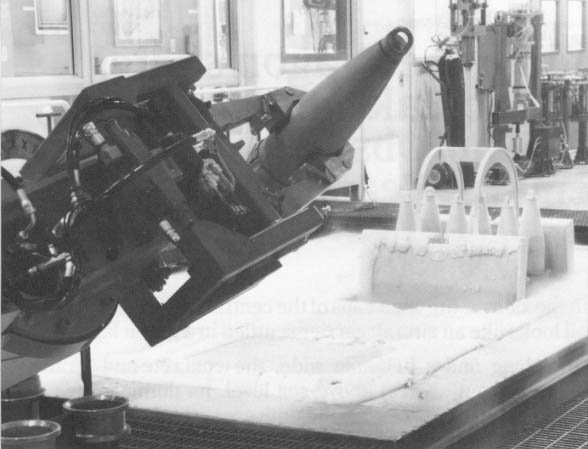
Unlike the four-furnace Johnston system, Which must be reconfigured for each type of munition and chemical agent, a cryofracture plant consumes them all in the same crusher and rotary kiln. “You don’t even take them out of the boxes,” says Wayne D. Willis, director of defense operations for General Atomics, which operates a prototype plant in San Diego. A government-sponsored study concluded that cryofracture could trim 30 percent off the cost of the current disposal program. That translates today to $2.3 billion in savings. Continuing studies may lead to a demonstration cryofracture plant at Tooele in 1993.
Because it involves incineration, cryofracture is taboo to Greenpeace and the NTCF. Both groups want a “closed” disposal system – that is, no wastes discharged into the environment, not even landfills. The groups also insist on environmental impact studies that are specific to each site where chemical weapons are stored. For the purposes of arms control, the organizations say, munitions can be drained and dismantled first, then destroyed once a non-polluting technology emerges.

The same recommendations stand for the Russians, of course, but the dissolution of the Soviet Union and inattention by the Russian government have cast serious doubts on the fate of the world’s largest chemical arsenal. In 1989, a disposal plant under construction at Chapayevsk, about 500 miles southeast of Moscow, was derailed due to community concerns over a chemical encore to Chernobyl.
“The program as it had to be implemented under the central government never got off the ground,” says Igor Khripunov, an arms control specialist with the former Soviet embassy in Washington. That statement has effectively sunk the historic chemical arms agreement signed in June 1990 by Bush and Mikhail Gorbachev. It may happen that the bilateral agreement will be superseded by a multinational treaty negotiated in Geneva.The Geneva agreement, concluded in August, would ban the manufacture of war poisons and require the complete destruction of chemical stockpiles within 10 years after it enters into force.
President Bush may yet achieve his years-old campaign goal. The 1990s seem especially ripe for eliminating huge stores of war poisons. Risky to move and maintain, almost universally condemned on moral grounds, and noticeably absent from Desert Storm combat, chemical weapons were an investment in national Security the true costs of which are just now coming to light.The last chapter in their grim history may be the most disputatious.
©1992 James Borg
James Borg, a science writer based in Honolulu, is investigating the future of chemical weapons.


